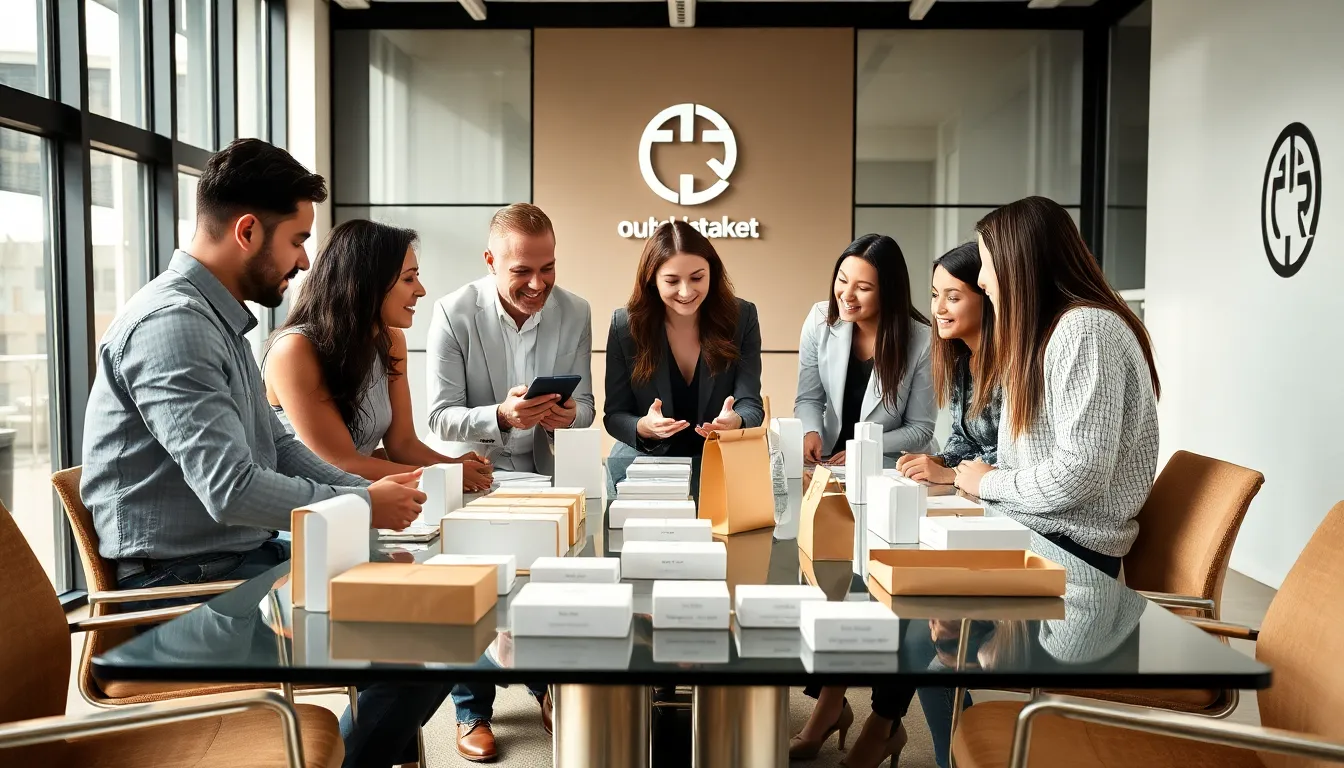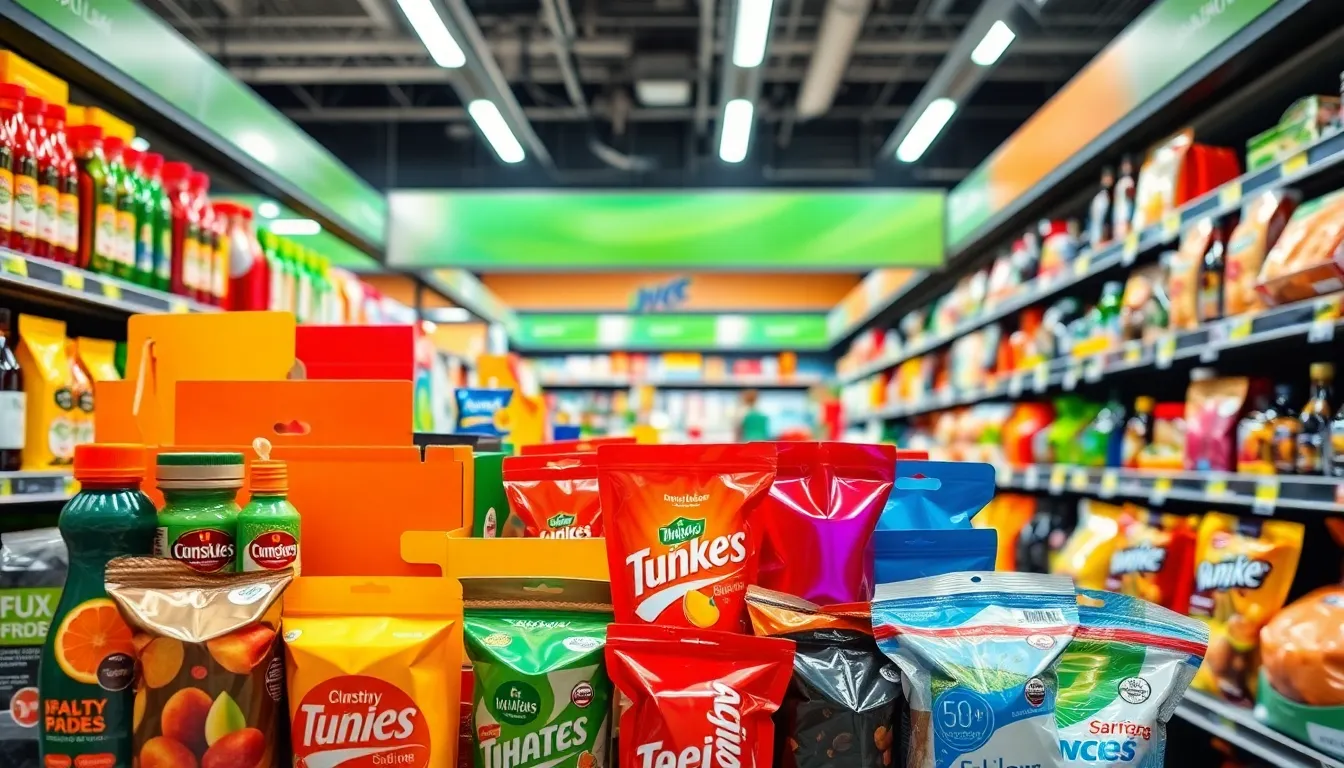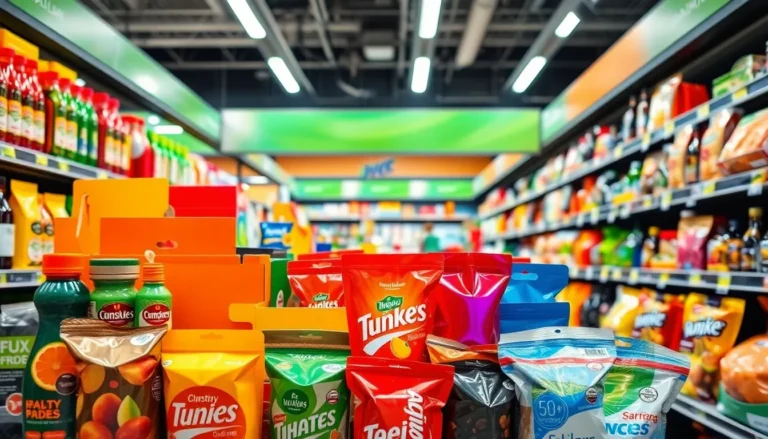Imagine walking down the supermarket aisle, bombarded by bright colors and intriguing shapes. What’s the first thing that catches your eye? You guessed it, packaging. In a world where choices are overwhelming, packaging isn’t just a pretty wrapper. It’s the silent salesperson, the enchanting storyteller, and sometimes, even the jester. With the right design, a product can go from overlooked to irresistible faster than you can say ‘buy one, get one free.’ Let’s explore the vibrant world of packaging concepts and design, it’s more than just looks: it’s a strategy for success.
Table of Contents
ToggleThe Importance Of Packaging In Product Marketing

Packaging plays a pivotal role in product marketing. It serves more than just a functional purpose: it’s the first thing a customer sees. In competitive markets, excellent packaging design can capture attention, evoke emotions, and promote brand recognition. For instance, luxurious packaging can attract high-end customers, while eco-friendly designs can appeal to environmentally conscious consumers. By effectively communicating the brand’s message and values, packaging transforms ordinary products into compelling stories that resonate with target audiences.
Consider the classic example of Apple. Their clean, minimalist packaging reflects a philosophy of simplicity, reinforcing the brand’s identity. Every unboxing moment feels special, like a gift to oneself. This kind of impact showcases how crucial packaging can be in shaping consumer perception and buying decisions.
Types Of Packaging Concepts
Packaging concepts can be categorized into several types, each tailored to meet specific product needs and marketing objectives.
- Primary Packaging: This is the first layer that directly contains the product. Think bottles, cans, and boxes. It’s essential for protecting the product while also providing branding opportunities.
- Secondary Packaging: This includes the outer box that holds primary packages, often used for transportation. It’s an opportunity to reinforce branding and ensure safe delivery.
- Tertiary Packaging: Typically utilized for bulk shipments, this layer is usually not seen by consumers. Yet, it’s crucial for logistics.
- Flexible Packaging: This innovative form employs materials like films and pouches to offer versatility and reduce space, perfect for snacks and convenience items.
- Sustainable Packaging: With an eye on the environment, this type uses biodegradable or recycled materials, appealing to today’s eco-conscious shoppers.
Each type plays a unique role in the larger scheme of product marketing, allowing brands to differentiate themselves in crowded markets.
Key Elements Of Effective Packaging Design
What exactly makes packaging effective? Here are some key elements to consider:
- Visual Appeal: Bright colors, unique shapes, and engaging graphics are essential in catching eyes and holding interest. These elements should reflect the brand and resonate with the target demographic.
- Functionality: Packaging must not only look good but also serve its purpose. It should safeguard the product, be easy to open, and offer convenience during use.
- Branding Consistency: Everything from colors to fonts should align with the brand’s identity. Well-designed packaging builds trust and recognition, essential in fostering brand loyalty.
- Information Clarity: Important details like ingredients, usage instructions, and recycling information should be legible and easy to find. This transparency encourages informed purchasing choices.
- Innovation: Creative and unexpected designs can create buzz and capture consumer interest. Think outside the box. Unique designs, such as resealable pouches or multipurpose containers, entice customers to explore.
By combining these elements, brands can create packaging that not only protects their product but also enhances the overall consumer experience.
Sustainability In Packaging Design
As environmental concerns grow, sustainable packaging design has shifted from trend to necessity. Brands that embrace sustainability are not just protecting the planet: they are also appealing to a growing segment of consumers who prioritize eco-friendliness in their buying decisions.
Sustainable packaging can include materials that are recyclable, compostable, or made from renewable resources. For example, a company like Coca-Cola has committed to using 50% recycled material in its PET plastic bottles by 2030.
Besides, minimalism in packaging reduces waste and transportation impacts, which is a win-win for both companies and consumers. Many brands are finding innovative ways to package products with reduced materials without compromising protection or aesthetics. As regulation and consumer demand pressure companies to rethink their packaging strategies, sustainability becomes not just an ethical choice but a competitive advantage.
Innovative Packaging Technologies
Revolutionizing the packaging industry, innovative technologies are setting new standards for efficiency, convenience, and sustainability. Here are a few noteworthy trends:
- Smart Packaging: Incorporating technology, smart packaging can interact with consumers. This might include QR codes linking to product videos or sensors tracking temperature to ensure safety.
- Biodegradable Materials: Advances now allow manufacturers to create packaging materials that break down naturally, reducing landfill waste significantly.
- Smart Seals: These advancements enhance product freshness, notifying consumers when food is no longer safe to eat. This can help in reducing food waste and assuring quality.
- 3D Printing: This technology offers personalized packaging options, allowing smaller businesses to experiment without hefty upfront costs. The possibilities are endless, enabling very creative, unique designs.
Innovation in packaging can significantly boost a product’s shelf appeal and marketability, ensuring brands stay ahead of the competition.
Case Studies Of Successful Packaging Designs
Examining real-world examples brings the concepts discussed to life.
- Red Bull: The slim can design sets it apart, evoking energy and speed. The company cleverly utilizes minimalist graphics, making it easily recognizable and highly marketable.
- Ben & Jerry’s: Known for colorful, quirky designs, each ice cream tub tells a story. The playful design conveys fun, enticing consumers to choose their offerings over competitors.
- Oreo: The iconic packaging uses a clever, clear window design, allowing customers to see the product while also highlighting its uniqueness. This invites engagement and curiosity, ensuring it stands out on shelves.
- Chobani: The yogurt brand’s simplistic labelling focuses on natural ingredients and offers a clear visual of its product, promoting transparency and accessibility. These successful packaging designs showcase how unique approaches can truly transform a product’s market presence.




